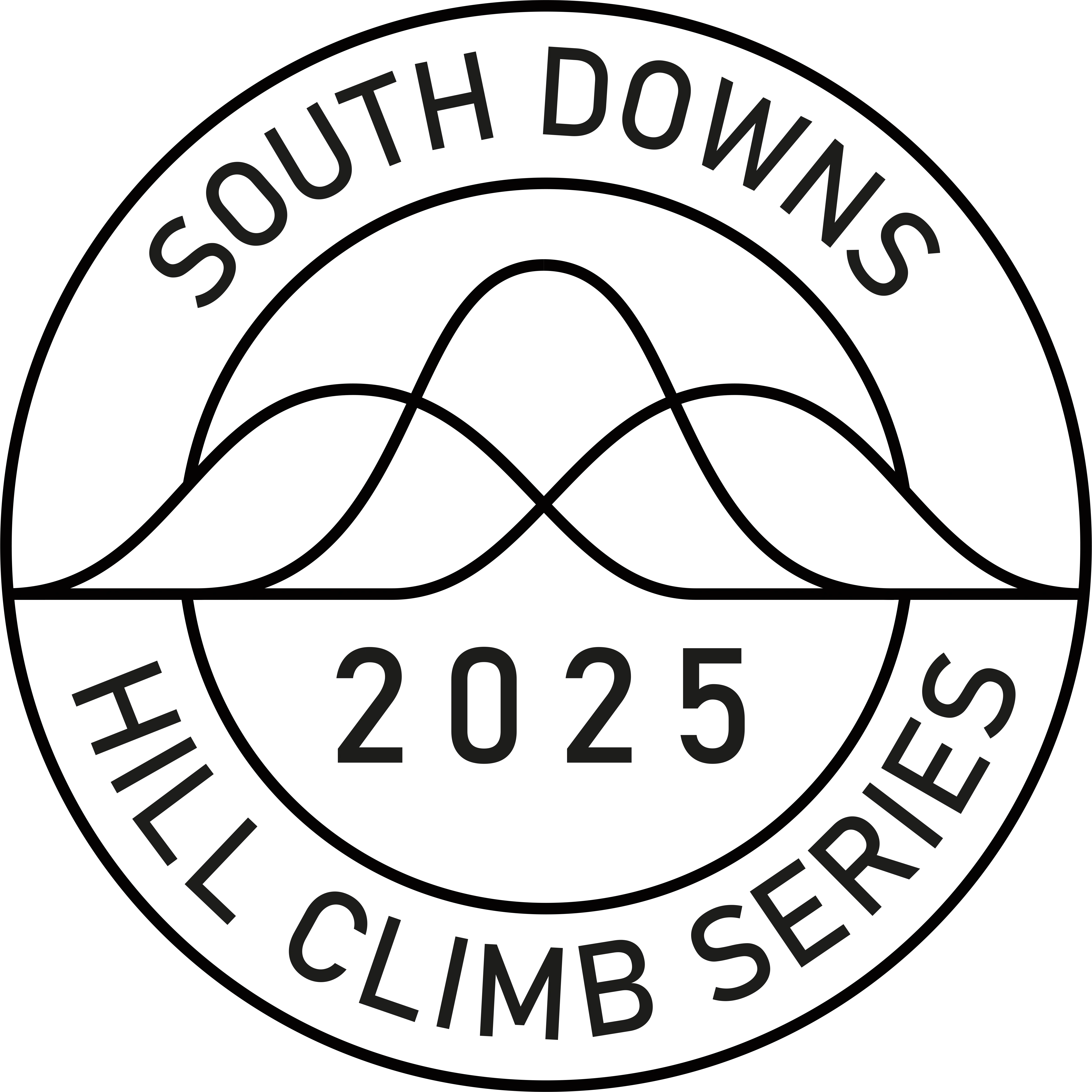
Enquiries: graham.rees@outlook.com
At its simplest, a hill climb event is a time trial up a steep hill where the rider with the fastest time is the winner. I can remember the great Andrew Feather, a multiple winner of the British National Hill Climb Championship stating, if you’re a strong rider and fairly light, then you’re well on the way to being a good hill climber; there’s no arguing with that, but how do you get there? Well, we’re here to help you on the journey to your first hill climb, or if you have ‘previous’ then it’s to rekindle your desire to participate again, to feel the pain and love – Let’s Climb Those Hills!
Let’s Climb Those Hills is run by the Sussex Nomads CC; we run the “South Downs Hill Climb Series” which is now in its 5th year. The event comprises 8 adult hill climbs run by individual cycling clubs, scattered along the South Downs, and one junior event – read about them on this website or alternatively check out the adult events on the Cycling Time Trials website. For the junior event see the British Cycling website https://www.britishcycling.org.uk/.
The British Hill Climb season is generally in September and October, with the British National Hill Climb Championships run at the end of October. Whilst we would encourage you to enter the events in the South Downs Hill Climb Series, there are many other great hill climb events which take place throughout England, Scotland and Wales.
Before we get started, hill climbing is a very demanding sport where your heart rate is likely to hit its maximum during an event, putting a lot of stress on your body. Please check with your health care professional/doctor to ensure you’ll be able to cope with the rigours of the sport!
To help you on your journey, we have produced a 24 week plan – which you can find here : Hill Climb Training Plan.
If you would like some additional information on hill climbing, I have included a number of links below which I hope you will find interesting.
An introduction to hill climbing by Dr Oliver Bridgewood (GCN contributor)> Contains a lot of good information and documents Ollie’s first season of hill climbs including Ditchling Beacon.
How to become a better climber | Operation Hill Climb | Cycling Weekly - YouTube
Ollie looking lean and mean...learn his secrets...
https://www.youtube.com/watch?v=NDY8-lcEIHI
A GCN documentary about hill climbing documenting the 2019 British National Hill Climb Championship. It contains some bike tech, training tips ..
https://www.youtube.com/watch?v=61qUKQlAAEI The Weird World Of Hill Climb Racing - YouTube
A Hunt Wheels video containing interviews of many of our top hill climbers has some top tips .
Surfing The Line | Inside the World of Hill Climb Racing - YouTube
And from our very own Adam Russell his blog of his first attempt at the Sussex Nomads hill climb event up Ditchling Beacon – COME ON Adam!
My FIRST EVER Hill Climb Event! | Ditchling Beacon | Cycling Vlog - YouTube
Some history of the sport and some top training tips …
Ten top tips for hill climbing | Cycling training | PedalCover
https://ilovebicycling.com/the-ultimate-hill-climb-training-guide/
https://uk.wahoofitness.com/blog/ask-experts-train-hills/
https://www.trainerroad.com/blog/becoming-a-faster-climber-training-tips-to-climb-faster/
Becoming an elite hill climber requires mastering several key factors:
By focusing on these factors, cyclists can enhance their hill climbing abilities and perform at an elite level.
Common failures in hill climbing often stem from a combination of physical, technical, and mental factors. Here are some of the most frequent issues:
By addressing these common failures, cyclists can improve their hill climbing performance and enjoy a more successful and fulfilling experience.

Enquiries: graham.rees@outlook.com